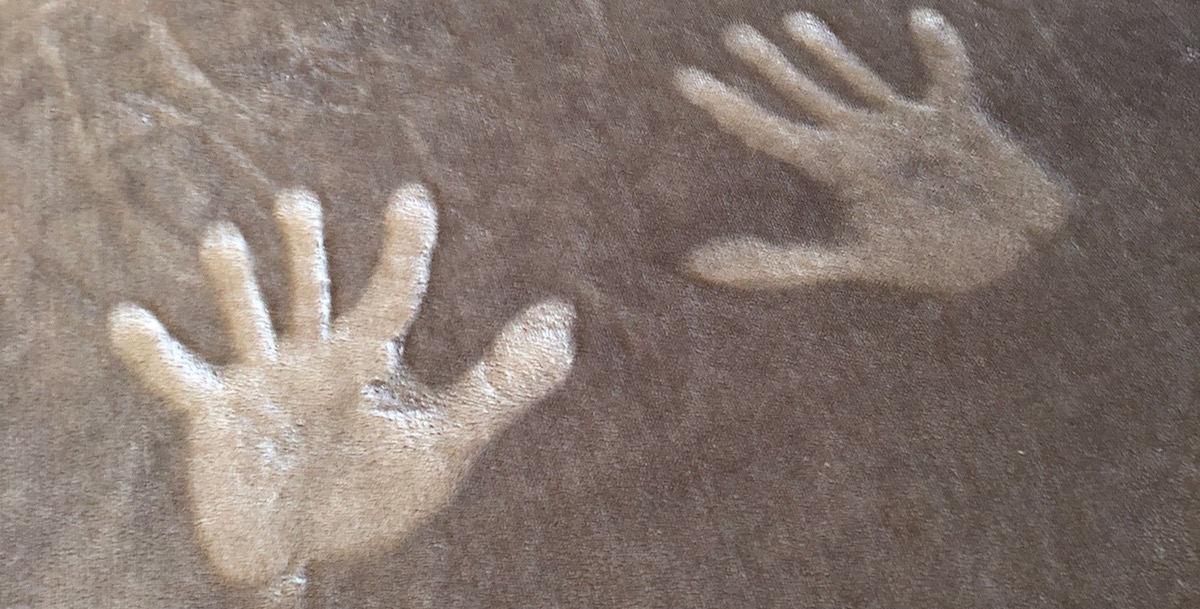Howdy, y’all. You know, if you don’t live in this part of Texas, you might not realize that there are actually five seasons here. Mother Nature slid a short one in between winter and spring, and that’s what we’re enjoying now. It’s called Pollentempore, which, as I’m sure you know, is Latin for “pollen season.”
Pollen season has several distinguishing characteristics, making it easy to identify (you can’t necessarily go by the calendar):
- All vehicles acquire a yellowish or greenish caste, depending on the type of tree that’s prevalent where they’re parked;
- The antihistamine shelves at the pharmacy and grocery stores are bare (I saw a guy on a street corner yesterday holding a sign that read “Will Work For Zyrtec”); and,
- Creeks and ponds are often mistaken for quagmires of quicksand.
We’ve got a lot to cover today that’s not already covered in oak pollen, so let’s giterdun, shall we?

There’s a more interesting precursor to spring than massive quantities of pollen, if I may paraphrase the Coneheads, at Casa Fire Ant, and that’s the appearance of lizards. I have no idea where they hang out in the winter months — Florida, perhaps, or maybe Corpus Christi — but as sure as the leafing out of mesquite trees (which is an accurate predictor of the last killing freeze about 98.4% of the time), the appearance of anoles, racerunners, and Texas spiny lizards (TSLs) around our house is assurance that our two weeks of spring before the six months of summer are imminent.
Last Saturday, as I hosed off the deck in an attempt to restore it to its original non-pollinated color, I interrupted a TSL catching some rays. At first, he seemed to enjoy the spray, but after a few minutes, I think he moved into poikilothermic mode, and began shutting down. I relented, but not before I got a photo because that’s just how I roll.
Shortly thereafter, as I washed off the handrails, I saw more lizardly movement. It was a Carolina anole, and it wasn’t nearly as tolerant as the TSL…or at least it was quicker. It immediately moved out of range of the hose, but not of the camera.


As long as we’re on the subject of reptiles, check out this article about alligators in Lake LBJ. And here I was thinking that jet skiers were the biggest threat to our paddle boarding outings.
Spoiler alert: Alligators hardly ever eat people in Horseshoe Bay. I can’t speak for the rest of the Highland Lakes, including Lake Travis, so you guys in Austin have been forewarned.


The above photo, provided by Car And Driver Magazine via the PR department at Ferrari, is the 2024 Purosangue (I think that translates to “way too rich for your blood”), and you can have one for just a hair more than $400,000, assuming you’re content with the base model. But that price will get you a naturally-aspirated V-12 making a relatively pedestrian 715 hp (hey, as I told you last week, Dodge makes a 1,025 hp Challenger!), and the only electric motors it sports are melded into the suspension of each wheel, apparently allowing the car to mimic all the steps in Dirty Dancing.
But, pray tell, what interesting thing do you note in the photo? Might it be…the suicide doors — or, more boringly and perhaps legally prudent, coach doors — in the passenger compartment? Surely you noticed that. You don’t see this type of door much anymore, unless you live in Beverly Hills because every four-door model of Rolls-Royce has them — but they’re still found in a few cars that mere mortals can afford. For instance, the Toyota FJ Cruiser has ’em, although they’re not really full-sized doors (and they’re called rear opening access doors).
Anyway, while I’m sure that Ferrari would prefer that we focused on almost anything other than the passenger doors on the Purosangue, it did lead me down the rabbit hole of car doors in general, and these suicide/rear-opening/coach doors specifically. And here’s a pretty interesting article about how they all came to be.

I may be a literary hack, but that doesn’t mean I don’t enjoy and appreciate a nice turn of phrase from those more skilled than me, and whenever a juicy quote catches my eye, I try to record it for future plagiarism sharing on these pages. Here’s one that made me LTM (laugh to myself; it wasn’t hilarious enough for a true LOL). It’s from a review of a Netflix series entitled Emily In Paris. I haven’t seen it, and probably won’t, but I love the critic’s observation about the lead character:
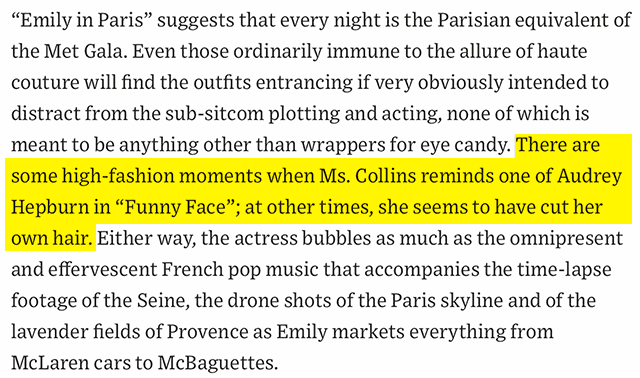

At the risk of being one of those people who attempt to shame/mock youngsters (i.e. anyone under the age of 40) for their lack of knowledge about The Good Old Days…can you identify what’s showing on the left side of the following semi-hallucinogenic image?

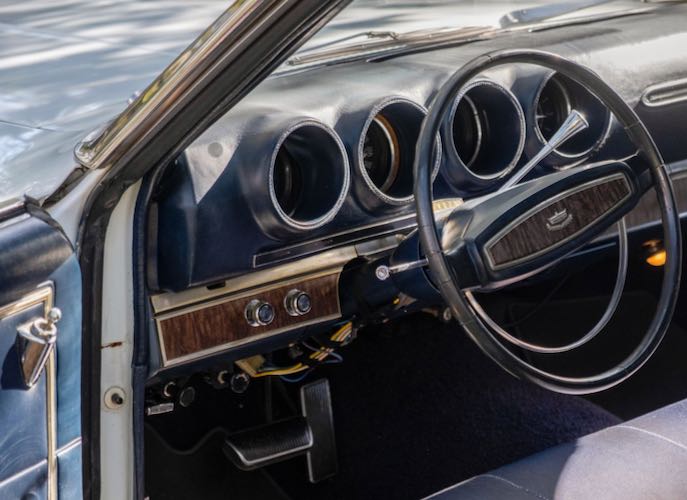
If not, drag that yellow line to the left to reveal the context which will explain everything. Possibly. If it still doesn’t help…bless your heart…click here to see the explanation at the bottom of the page.

“We were on American Bandstand,” Dickie remembers, “And Dick Clark [AB’s host] didn’t like us at all. My manager was a Hell’s Angel, and we were sitting there smoking a hash pipe, and Dick Clark comes in and says, ‘It’s people like you that give rock’n’roll a bad name’. We looked at him and smiled, and said, ‘Thanks a lot, Dick’.”
That’s a quote pulled from this interview with the members of a band called Blue Cheer, which you metalheads of a particular age will recall was once billed as the “loudest band in the world.” As a teenager in 1968, I remember watching that episode of American Bandstand (I gave it a brief nod in this years-old post).
I’m not sure why I started thinking about this again, but I’ve learned some things that I didn’t know back then. For example, I always figured that the band’s name was named after the laundry detergent (never stopping to ask the logical question, “why?”). Nope, the band members were heavy user of psychedelic drugs, and Blue Cheer was a particularly potent form of LSD.
Also — and this was hard to track down — they got the unholy decibel measurement by virtue of two 100-watt Marshall amps connected to the guitar, and another two connected to the bass (according to this article about really loud bands).
Anyway, while Blue Cheer didn’t make artistically compelling music, they were probably the first true heavy metal band, and that makes them more than just a footnote in musical history. So, without further ado, here’s their performance on American Bandstand. I give it a 5…the words are OK but it’s really hard to dance to.
And out of fairness to your ears, here’s Eddie Cochran’s original version, from 1958.

Parting Shot


*The little silver rod with a ball on the end is actually a joystick (surely you know what that is, you gamer, you) and was used to adjust the driver’s side mirror via a cable attached to it. Before that development, you had to roll down the window and adjust it by hand. Power windows first became popular back in the Seventies (according to this article, which I have no reason to doubt). [Return]
Discover more from The Fire Ant Gazette
Subscribe to get the latest posts sent to your email.

